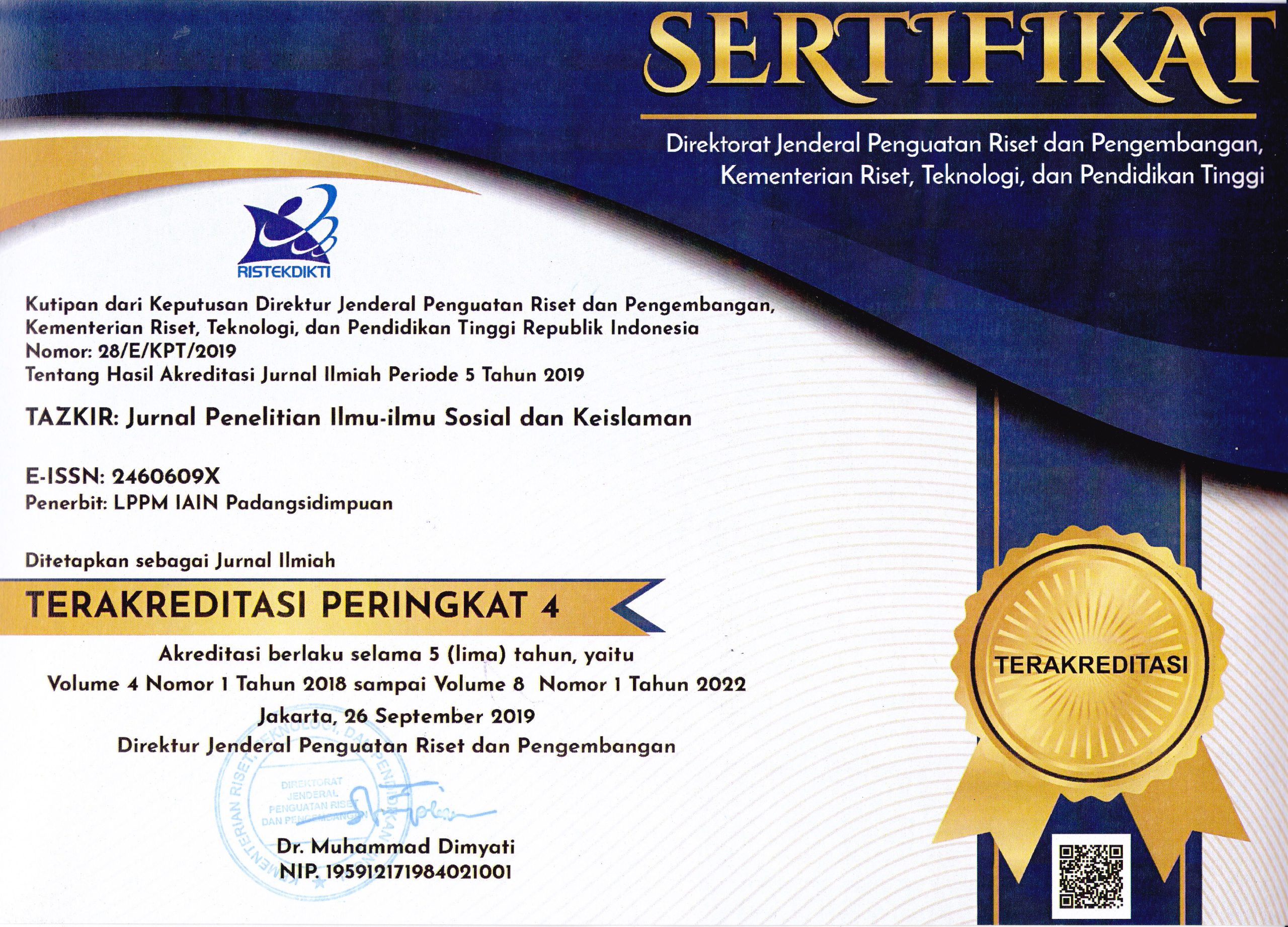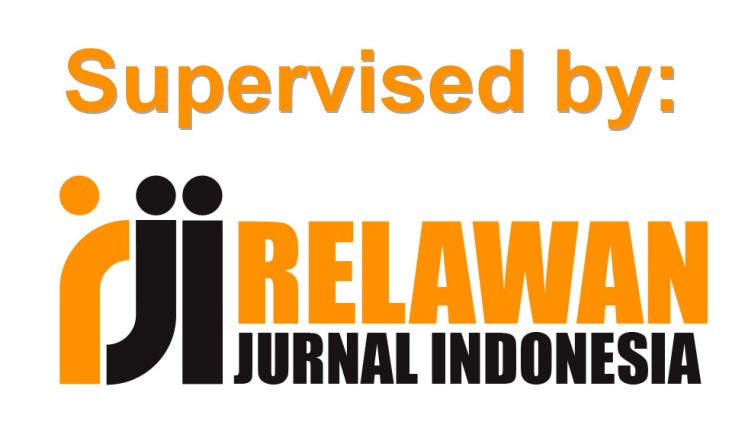The Significance of Students' Perception and Participation on Reading Comprehension at IAIN Padangsidimpuan
Abstract
Full Text:
PDF [ENGLISH]References
Churiyah, M., Sholikhan, S., Filianti, F., & Sakdiyyah, D. A. (2020). Indonesia Education Readiness Conducting Distance Learning in Covid-19 Pandemic Situation. International Journal of Multicultural and Multireligious Understanding, 7(6), 491–507. https://doi.org/10.18415/ijmmu.v7i6.1833
Fajarwati, D., Raharjo, T. J., & Samsudi, S. (2016). The Implementation of Multiple Intelligence-Based School Management. The Journal of Educational Development, 4(1), 31–36. https://journal.unnes.ac.id/sju/index.php/jed/article/view/10990
Gillies, D. (2008). Student perspectives on videoconferencing in teacher education at a distance. Distance Education, 29(1), 107–118. https://doi.org/10.1080/01587910802004878
Creswell, J. W. (2011). Educational Research: Planning, Conducting, and Evaluating Quantitative and Qualitative Research (2th Edition). Addison Wesley. https://book4you.org/book/1187963/81def5
Himmele, P., & Himmele, W. (2011). Total Participation Techniques: Making Every Student an Active Learner. Association for Supervision & Curriculum Development. https://book4you.org/book/1186818/f62388
Himmele, P., & Himmele, W. (2017). Total Participation Techniques: Making Every Student an Active Learner, 2nd ed. Association for Supervision & Curriculum Development. https://books.google.co.id/books?id=vGwuDwAAQBAJ
Maharsi, I., Ghali, M. I., & Maulani, S. (2019). High School Students’ Reading Habit and Perception on Reading for Pleasure. Nternational Journal of Indonesian Education and Teaching, 3(1). https://www.researchgate.net/profile/Ista-Maharsi/publication/335012807_high_school_students'_reading_habit_and_perception_on_reading_for_pleasure/links/5d4a3b0ba6fdcc370a80e76c/high-school-students-reading-habit-and-perception-on-reading-for-pleasure.pdf
Maulida, Y., Firman, & Ahmad, R. (2021). The Concept of Education and Social Charge Change, Modernization and Development. Literasi Nusantara, 2(1), 121–128. http://journal.citradharma.org/index.php/literasinusantara/article/view/268
Modell, H. I. (1996). Preparing students to participate in an active learning environment. Advances in Physiology Education, 270(6), S69. https://doi.org/10.1152/advances.1996.270.6.S69
Ness, M. K. (2009). Reading comprehension strategies in secondary content area classrooms: Teacher use of and attitudes towards reading comprehension instruction. Reading Horizons: A Journal of Literacy AndReading Horizons: A Journal of Literacy and Language ArtsLanguage A, 49(2). https://scholarworks.wmich.edu/cgi/viewcontent.cgi?referer=&httpsredir=1&article=1048&context=reading_horizons#page=52
Nunan, D. (2003). Language Teaching Methodology. Prentice Hall
Paschal, M. J., & Mkulu, D. G. (2020). Online Classes during COVID-19 Pandemic in Higher Learning Institutions in Africa. Global Research in Higher Education, 3(3), p1. https://doi.org/10.22158/grhe.v3n3p1
Piaget, J. (2001). The Psychology of Intelligence. Routledge. https://doi.org/10.4324/9780203164730
Purnomo, T. (2021). Students’ Perceptions in Online Learning Toward Reading Comprehension at Tenth Grade of SMA Negeri 1 Kota Jambi [Thesis, Universitas Batanghari]. http://repository.unbari.ac.id/926/
Sari, G. R., Santihastuti, A., & Wahjuningsih, E. (2020). Students Perception on Reading Comprehension Problems in Narrative Text. LLT Journal: A Journal on Language and Language Teaching, 23(2), 342–353. https://e-journal.usd.ac.id/index.php/LLT/article/view/2211
Suhendi, A., Purwarno, P., & Chairani, S. (2021). Constructivism-Based Teaching and Learning in Indonesian Education. KnE Social Sciences, 76–89. https://doi.org/10.18502/kss.v5i4.8668
Sulistianingsih, E. (2018). Developing Students’ Participation in a Mixed-levels Reading Class via Cooperative Integrated Reading and Composition (CIRC). VISION: Journal For Language And Foreign Language Learning, 7(1). https://pdfs.semanticscholar.org/229c/719a0bdf134074a575e9c2cfb8cb990cb264.pdf
Syaveny, N., & Johari, I. (2017). The Correlation Between Class Participation and Students’ English Learning Achievement at SMA Negeri 12 Padang Kec. Naggalo West Sumatera. International Seminar on Language, Education, and Culture, 208–211. https://sastra.um.ac.id/wp-content/uploads/2017/11/208-211-Niza-Syaveny-Indra-Johari-edited_LAYOUTED.pdf
DOI: https://doi.org/10.24952/tazkir.v8i1.5744
Refbacks
- There are currently no refbacks.
Copyright (c) 2022 authors

This work is licensed under a Creative Commons Attribution-ShareAlike 4.0 International License.

This work is licensed under a Creative Commons Attribution-ShareAlike 4.0 International License.
Editorial Office:
Institute for Research and Community Services; Universitas Islam Negeri Syekh Ali Hasan Ahmad Addary Padangsidimpuan.
Jl. T. Rizal Nurdin Km. 4,5 Sihitang 22733 Padangsidimpuan, Sumatera Utara, Indonesia.
Phone: (+62) 634 22080 Faximili: (+62) 634 24022
e-mail: lppm@uinsyahada.ac.id
 View My Stats
View My Stats



